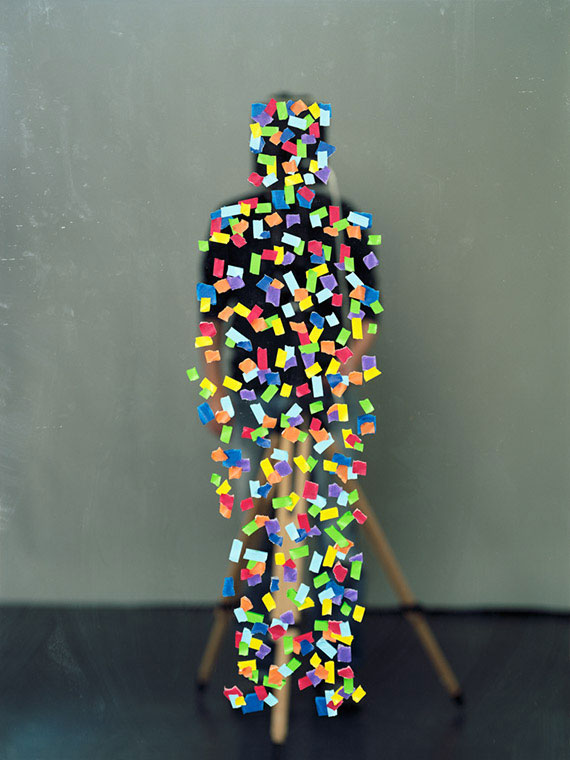
Akihiko Miyoshi's Abstract Photos
Artist, photographer and computer engineer plays with mirrors, paper and tape to give depth to 2D photographs
Japanese artist Akihiko Miyoshi plays with one of the very things that make a photograph a photograph – its flat, 2-dimensional surface – in his series Abstract Photographs.
At first glance Miyoshi’s photographs are flat representations of colours on a surface but on closer inspection, with a clever use of mirrors, tape and the depth of field that can be achieved using his large format camera, 3-dimensional layers begin to form.
{media1}
"They attempt to unpack the structural mechanics of photographic representation,’ Miyoshi says. "While the images allude to formal abstraction with various shapes and colors, the photographic nature of the images are emphasized as the image plane is selectively focused and blurred through the use of depth of field.
Behind the photographs Miyoshi stands with his camera and immediately the scale of the objects in the images is evident. The depth of the images is soon revealed as the once level colour blocks, reminiscent of DNA profile photographs, now take up the space between the photographer and the flat surface of the image.
{media4}
Originally studying for a PhD in computer engineering at Carnegie Mellon University, Miyoshi put his course on hold to pursue an MFA in photography from the Rochester Institute of Technology and is now an Associate Professor of photography and digital media at Reed College.
From the look of his photographs it’s not hard to see the influence that computer engineering has had on Miyoshi’s graphical work. The choice of red, green, and blue tape is based on the three primary colours that constitute a pixel.
{media3}
"From afar the tapes can be seen as the pixels glowing on the computer screen," Miyoshi says. "While the images are made using primarily traditional photographic methods, they reference the new aesthetic that seems to be emerging as a result of the use of digital tools and technologies. Seen in this context, by always including only the silhouette of the photographer with his camera, the images remind the viewers of the presence/absence of the producer/author and the method."
{media5}
And we must add that we particularly admire the innovation of his artists’ statement which reads less like prose and more like a map of his brain. It definitely gives you some idea of the thought processes behind his works (though we can't say how much clearer you'll be once you’ve finished reading it).
{media6}
If you're a fan of colourful photographic imagery you really must check out our forthcoming book EarthArt. The images in it cover the entire colour spectrum as found in nature, and each photograph is accompanied by a short caption explaining how, where and why these spectacular colours occur: from tropical turquoise seas to icy blue glaciers; from lush green forests to rivers turned green by microscopically small algae.